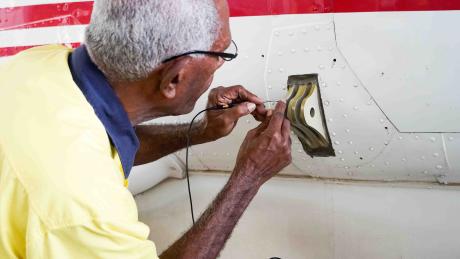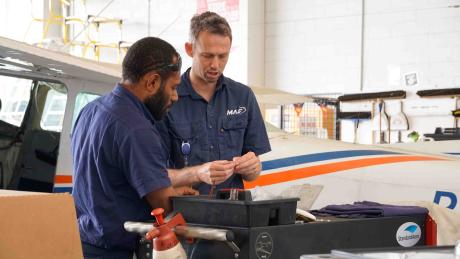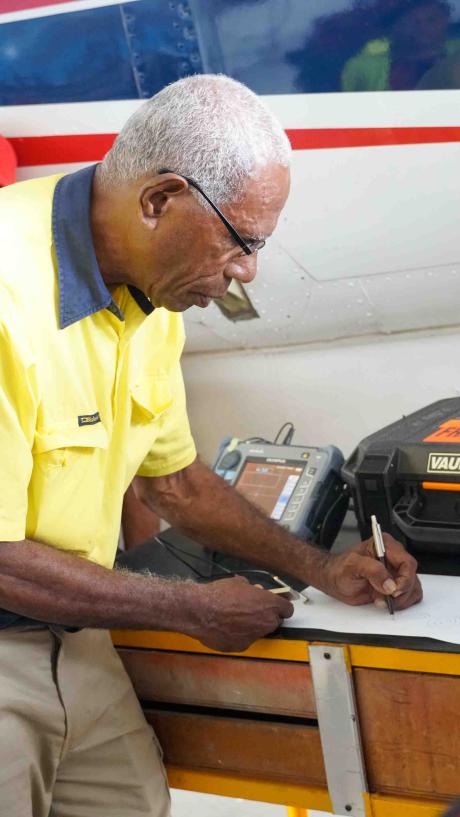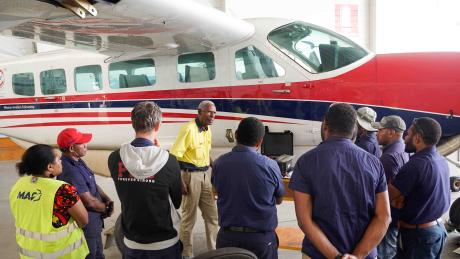
Our aircraft are beautiful to look at, but it’s what lies beneath the surface that counts. See what happened when this Cessna Caravan was due for a detailed check-up.
Story by Aquila Matit
MAF aircraft are checked constantly to ensure safety for passengers, but one specialist test goes beyond what the eye can see.
Cessna Caravan P2-MAG was given a clean bill of health after an eddy current machine test at MAF’s hangar in Mount Hagen, which also gave the team an opportunity to learn from a specialist.

MAF’s Maintenance Operations Supervisor in PNG, Benjamin Hunt, spoke highly of the test and what it means for our aircraft.
“Eddy current is a requirement by the manufacturer of the aircraft. As the aircraft get older, they may experience fatigue in their natural course of flying,” he said.
“The older the aircraft become; the more fatigue has been experienced on the aircraft. We want to keep the aircraft safe; we need to continually keep inspecting the aircraft and eddy current is one of those ways of inspecting for cracks in specific areas that might not be visible to the eye.”

The work was done by a local NDT (non-destructive testing) specialist contractor Sere Oi who explained the test that was executed particularly on the main body (fuselage) of the aircraft and its attachments.
“I am checking the fuselage to make sure the aircraft has the structural strength when they fly,” he said.

After a thorough check for a couple of hours, Mr Oi gave positive feedback.
“The advantage of that is that the aircraft is now airworthy because we have not found any defects and the aircraft can go fly safely, carrying passengers, carrying cargo, and help the local people,” he said.
The advantage of that is that the aircraft is now airworthy because we have not found any defects and the aircraft can go fly safely, carrying passengers, carrying cargo, and help the local people
It’s a great outcome for the engineering team, but it was also an achievement finding a suitable specialist who could do the task. Mr Hunt highlighted the reason why MAF does not have its own eddy current specialist in PNG.
“Eddy current testing is a specialist type task. You need a lot of experience. You normally start as an engineer and then they specialise in NDT. For someone to be employed by MAF full time to do it is not practical,” he said.
Mr Oi who has wide experience and is an expert in this field, also spent time with the engineers to explain the process and encourage local staff to consider pursuing this in-demand career.

“There are people training to become an NDT, but we still are going to need a lot more people like me to be able to support the aviation industry,” he said.
One of the younger trainee engineers, Markus Ape, was inspired to learn from an expert.

“For me, as a young engineer, it is a privilege for me to learn from him. I also thank MAF for bringing him across,” he said.
After the checks, the plane is now back in action, serving the remote communities of PNG.